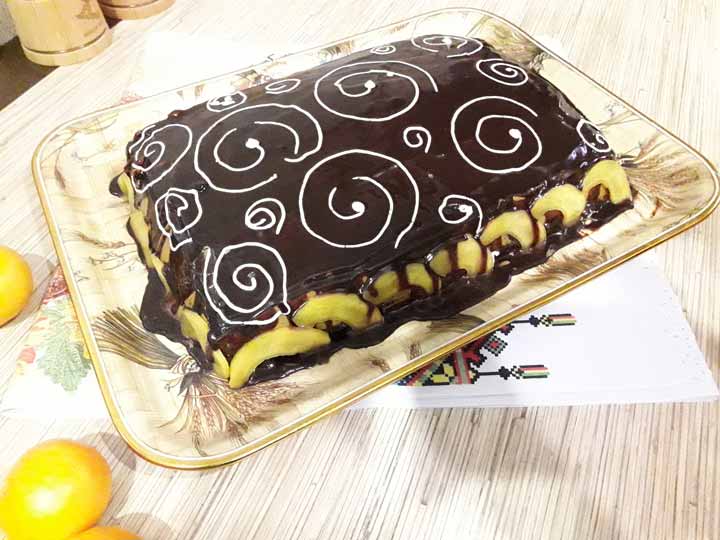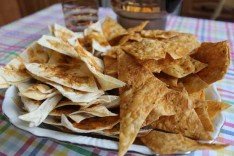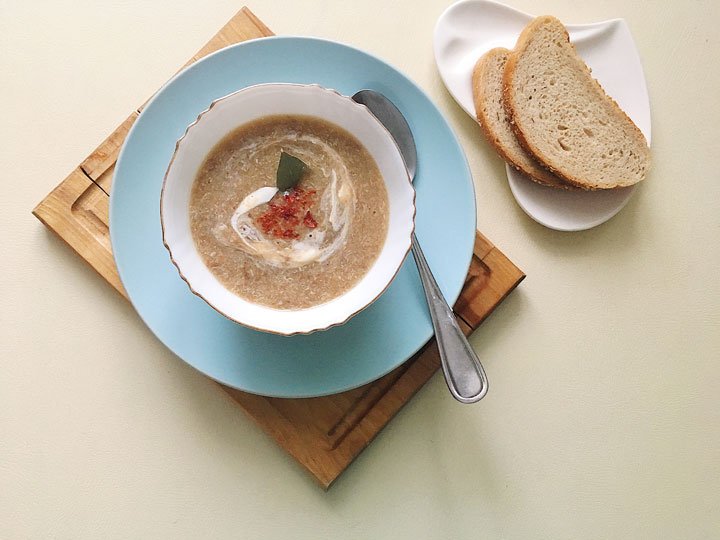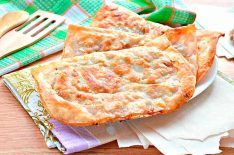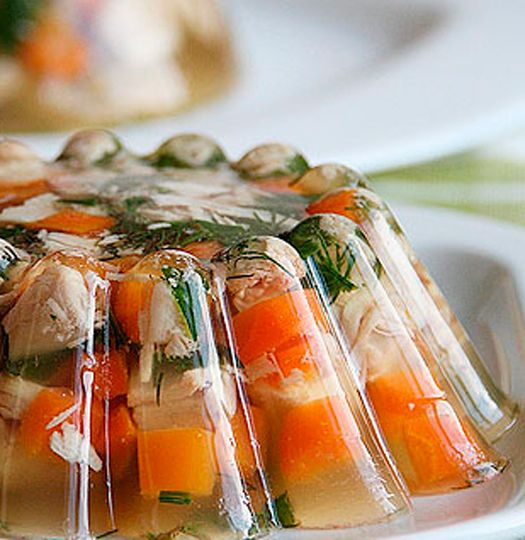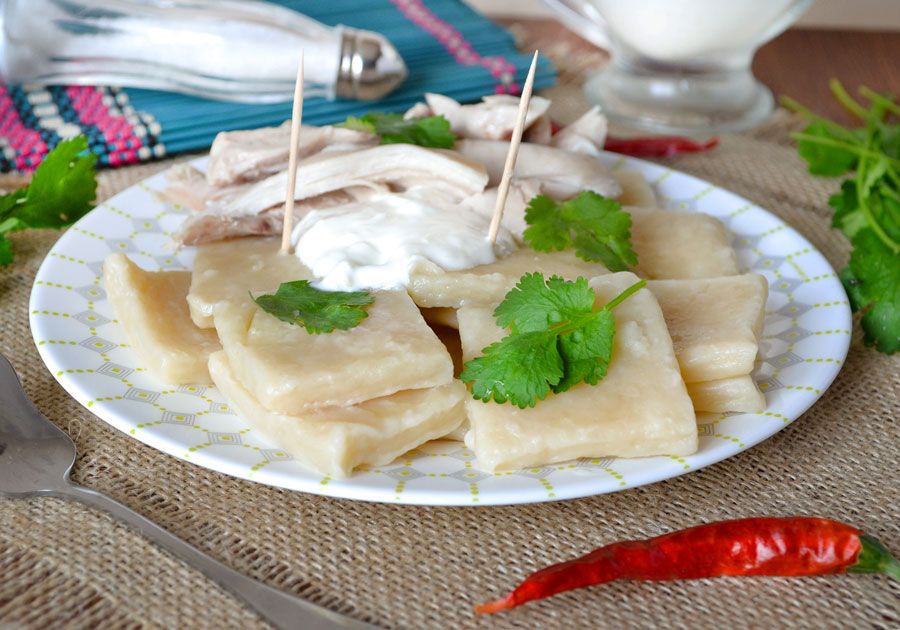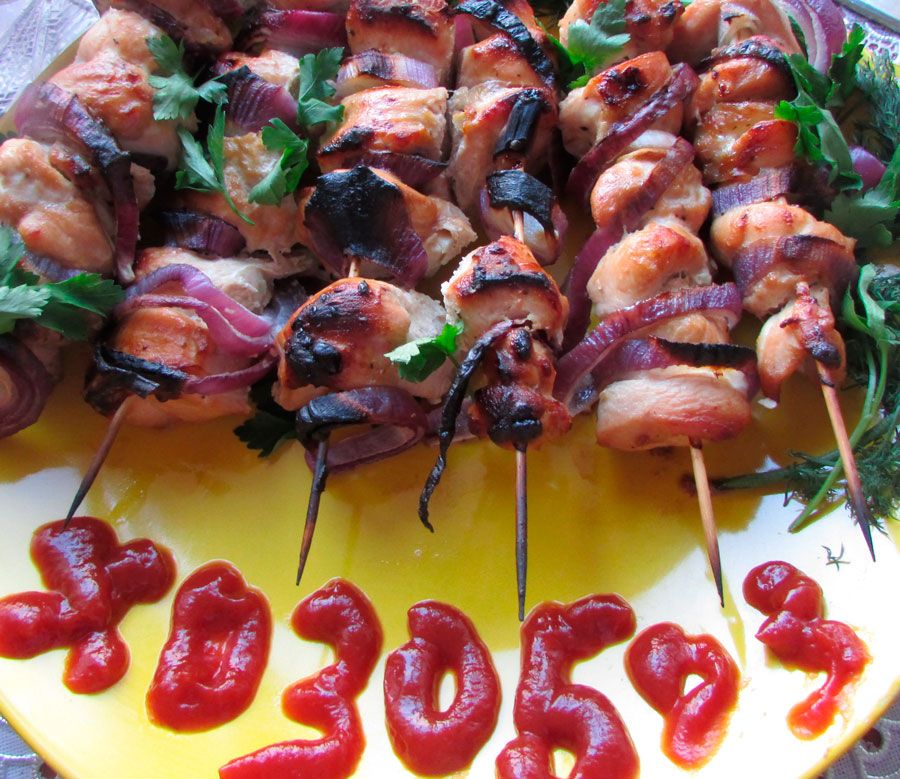Shukrut
- Nutrition Facts
- Calories: 269
- Protein: 9.72
- Fats: 20.67
- Carbohydrates: 9.09
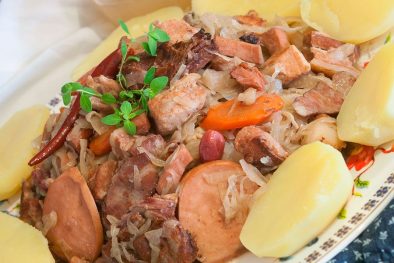
HozOboz presents today a cult recipe of Alsatian cuisine - choukrut, which will be to the taste of all lovers of pickled (fermented) and stewed vegetables, flavored with an abundance of meat products.
History of the Alsatian Choucroute
In Europe, the Germans have always been leaders in the cultivation of cabbage, as well as in the preparation of a large assortment of dishes from this vegetable, the cruciferous family. But the first written mention of a special sauerkraut was found in French archives in the 15th century, and in the 16th century it could be found in almost all monastic refectory books.
The classic choucrute, whose recipe has been protected by a special geographical right since 2012, along with Parmegiano Reggiano cheese, champagne, cognac, Parma ham and other world-famous products, has precisely these, German and French, long historical roots.
A special commission has identified a number of features by which fresh cabbage shukrut has the right to such a name:
- cabbage must be of Alsatian origin, meeting certain standards (with a weight of at least 3 kg and always with light leaves, when no more than three top cabbage leaves remain green;
- For the fermentation of cabbage, only natural fermentation without heating and adding enzymes should be used;
- Only goose fat and / or lard can be used for stewing;
- The dish should be stewed in local alcohol (more often in dry white, sometimes in white sparkling wine or beer);
- The canonical choukrut must be produced only in Alsace (in industrial boilers or pots);
- The composition should contain three varieties of sausages - Frankfurt, Strasbourg and Montbéliard sausages, complemented by knuckle and prosciutto. "Kompostkrut" or "garbage cabbage"
Since hozOboz is not located in Alsace, but it is very curious to try cabbage shukrut according to a recipe close to the original, all the requirements of the Alsatians approved in 2012 will be violated, because not Alsatian, but local farm products produced thousands of kilometers from Alsace.
Ingredients:
- White cabbage - 1 pc.;
- Carrots - 2 pcs.;
- Celery - 1 piece;
- Parsley - 1 piece;
- Onion - 1 pc.;
- Garlic - 1 pc.;
- Goose fat - 100 g;
- Apple wine - 0.5 l;
- Pork pulp - 600 g;
- Smoked pork ribs - 450 g;
- Cheek - 300 g;
- Cooked-smoked pork ham - 300 g;
- Homemade sausage, baked on wood - 180 g;
- Boiled creamy sausage - 180 g;
- Dogwood - 240 g;
- Cloves - 5 pcs.;
- Hot red pepper - 1 pc.;
- Bay leaf - 5 pieces;
- Salt - to taste.
Step by step instructions with photo
- Prepare all the necessary vegetables: light white cabbage, carrots, parsnip and parsley roots, onions, garlic, as well as meat and meat products, namely, medium-fat pork pulp, goose fat - 120 g, smoked pork ribs, ham smoked pork, cheek, baked meat homemade sausage, boiled sausage, sausages or sausages. In addition, we need dry apple or white grape wine, dogwood, salt and spices (bay leaf, cloves, hot red pepper).

We will prepare all the necessary products, including spices and seasonings.
- Place the chopped pork pulp and smoked ribs in a small saucepan, saucepan and fill with water.

Put the pieces of pork and smoked pork ribs in a saucepan.
- Cut most of the roots (except carrots) large. Pepper hot dry get rid of seeds and partitions, using scissors.

Cut all the roots into small cubes. We clean the chile from seeds and also chop it smaller.
- We put the chopped roots, hot pepper slices, bay leaf, cloves in a resealable strainer and send it to the broth to the pork and smoked pork ribs.

Put the crushed roots, as well as bay leaf, chili and clove inflorescences into a special strainer, close the sieve and place it in the pork broth.
- Melt pieces of goose fat in a large cauldron or in a wok.

We put a pot on the fire and drown goose fat in it.
- Brown the onion, chopped with feathers.

In melted fat, fry the diced onion.
- Add large mugs of carrots to the passerovka.

Add carrots cut into circles to the onion.
- And quarters of garlic cloves.

We throw garlic cloves divided into quarters into the passerovka.
- Now it's the turn of the cheek strips.

Add pork cheeks cut into strips.
- Throw mugs of boiled creamy sausage into the meat broth with smoked meats.
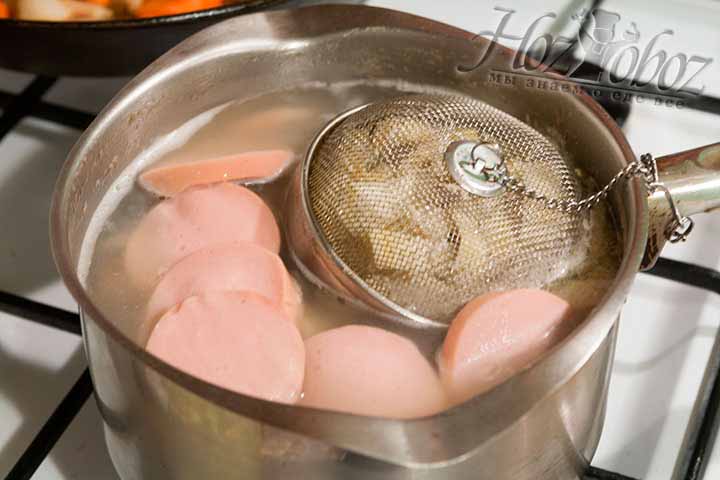
In the meantime, mugs of boiled sausage, preferably baby or creamy, should be added to the meat broth.
- Add boiled pieces of pork and ribs to the sauté.
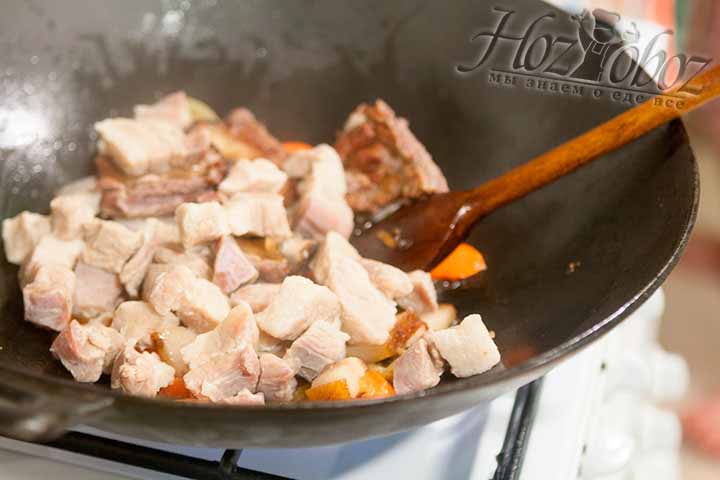
Take out the boiled pork and ribs from the broth and place them in a saute.
- Thoroughly brown all the cold cuts, while constantly stirring with a spatula.

It is necessary, while stirring, to brown all the meat ingredients well.
- Place thinly shredded cabbage on top of this layer. In the original, naturally sauerkraut is added. But the recipe for fresh cabbage chowder involves a violation of the classic ingredients. The necessary acidity is achieved by adding a suitable amount of apple wine.
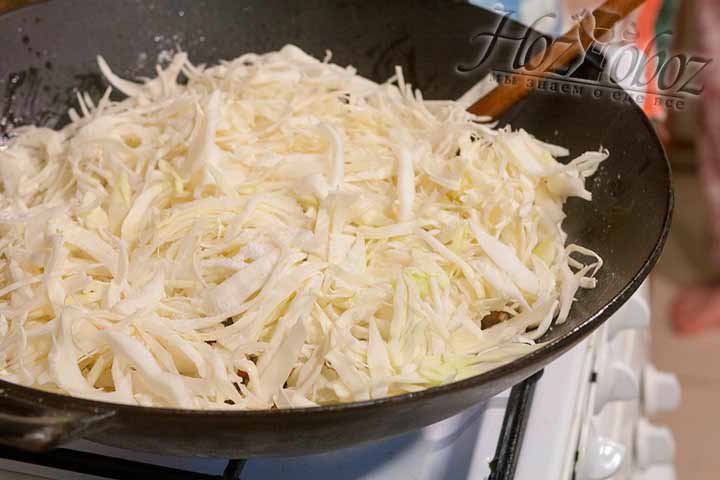
Place chopped fresh or sauerkraut on top of the fried ruddy meat. If you add fresh cabbage, as we did, do not forget to acidify the dish with apple wine.
- Plus, our fresh dogwood makes this tart so special.
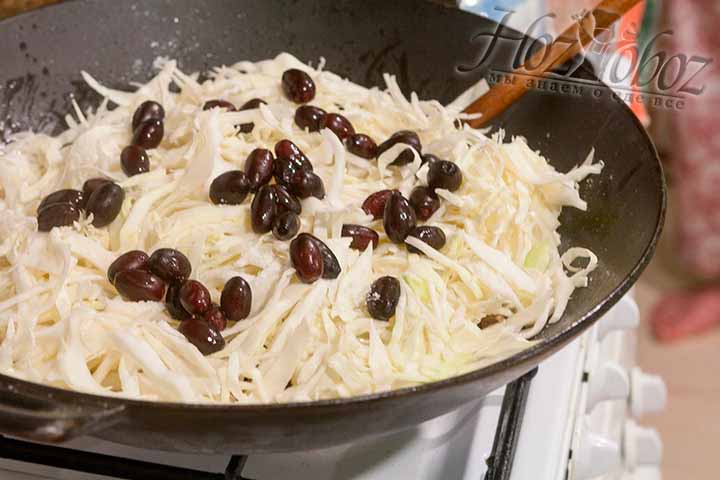
Add dogwood.
- Now season the shukrut with spices - bay leaf, red hot pepper.
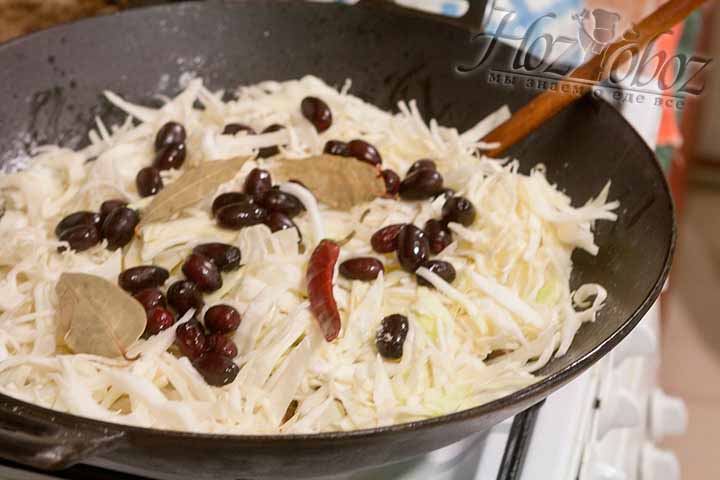
It's time to season the choukrut with spices.
- Place pieces of the remaining smoked meats on top (homemade baked sausage, boiled-smoked pork ham and mugs of creamy sausage boiled in broth.
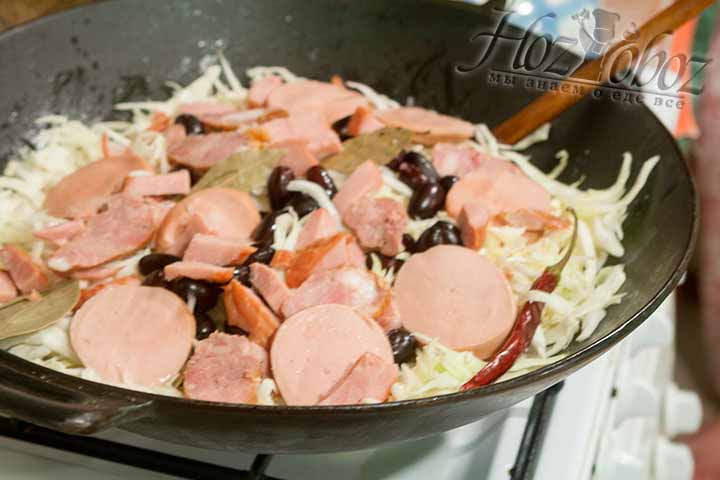
Place pieces of the remaining smoked meats on top (homemade baked sausage, boiled-smoked pork ham and mugs of creamy sausage boiled in broth.
- Cover with another layer of shredded and salted white cabbage.
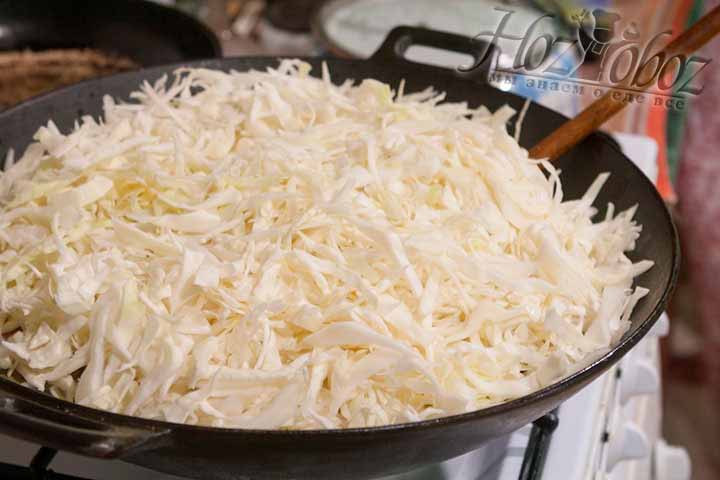
The last layer will be cabbage again.
- Pour the prepared choukrut with apple wine.
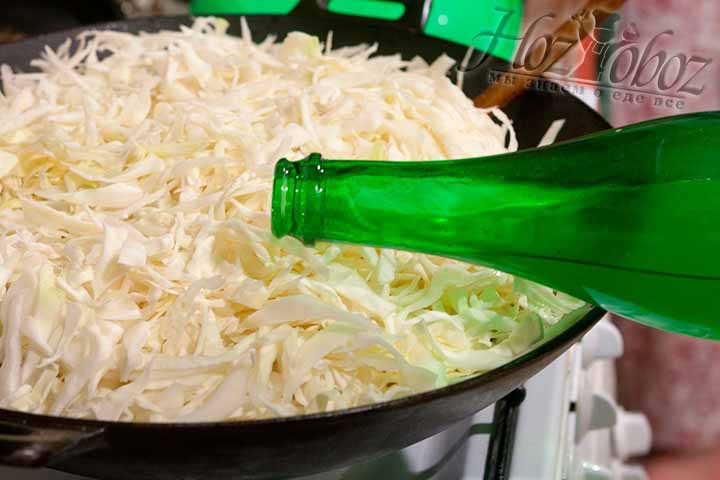
Pour apple wine for acid.
- Add wine as it boils.
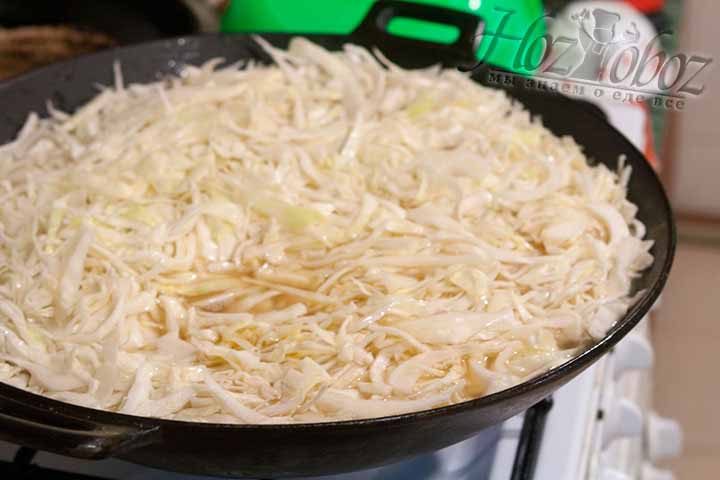
As the wine boils away, do not forget to add it.
- Our choukrut, which used fresh cabbage, is ready! We arrange it on large dinner plates, beautifully serving cold cuts. We use boiled potatoes for garnish. Serve with the same apple wine in which the choukrut was stewed. It will be very tasty!
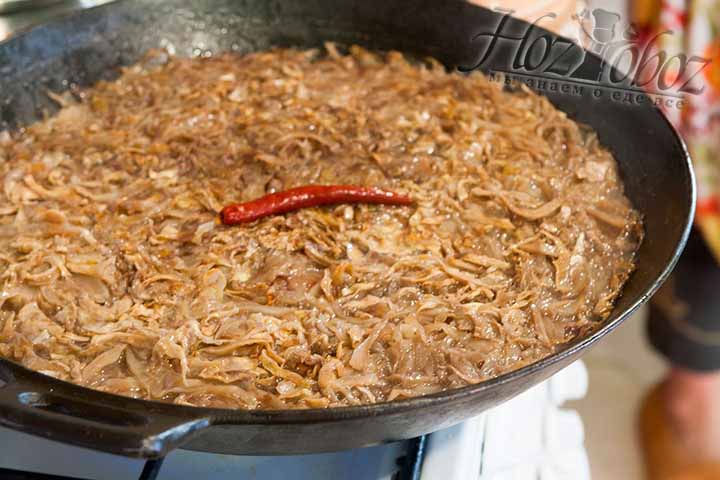
Well, that's all the shukrut with fresh cabbage is ready, it's time to put it on plates and garnish with boiled potatoes. The same apple wine with which we stewed it goes especially well with shukrut.
- Bon appetite.

Bon appetite.
About the benefits of shukrut
As part of this dish, vegetables and meat products are successfully combined in a large assortment, which allows us to talk about the balance of fiber and protein. Shukrut is an optimally high-calorie dish that decreases in calories due to the high content of low-calorie cabbage. Natural apple wine is a source of iron, and carrots in goose fat are a good way to get digestible carotene.
Choukrut Alternatives
In addition to dry white grape wine, sparkling and apple wines, with the same composition of ingredients, beer can also be used, getting a completely different taste of choukrut. You can experiment with meat products, achieving some new notes in a popular dish prepared based on Alsatian cuisine. Or try to find an opportunity to travel to some Alsatian village to cook up a classic version with local products, learning the taste that has been cultivated for several centuries. HozOboz hopes you enjoyed Alsatian cuisine and the opportunity to experiment with the products available in your market. Now you have all the instructions to make delicious choukrut. Have a great gastronomic experience!





